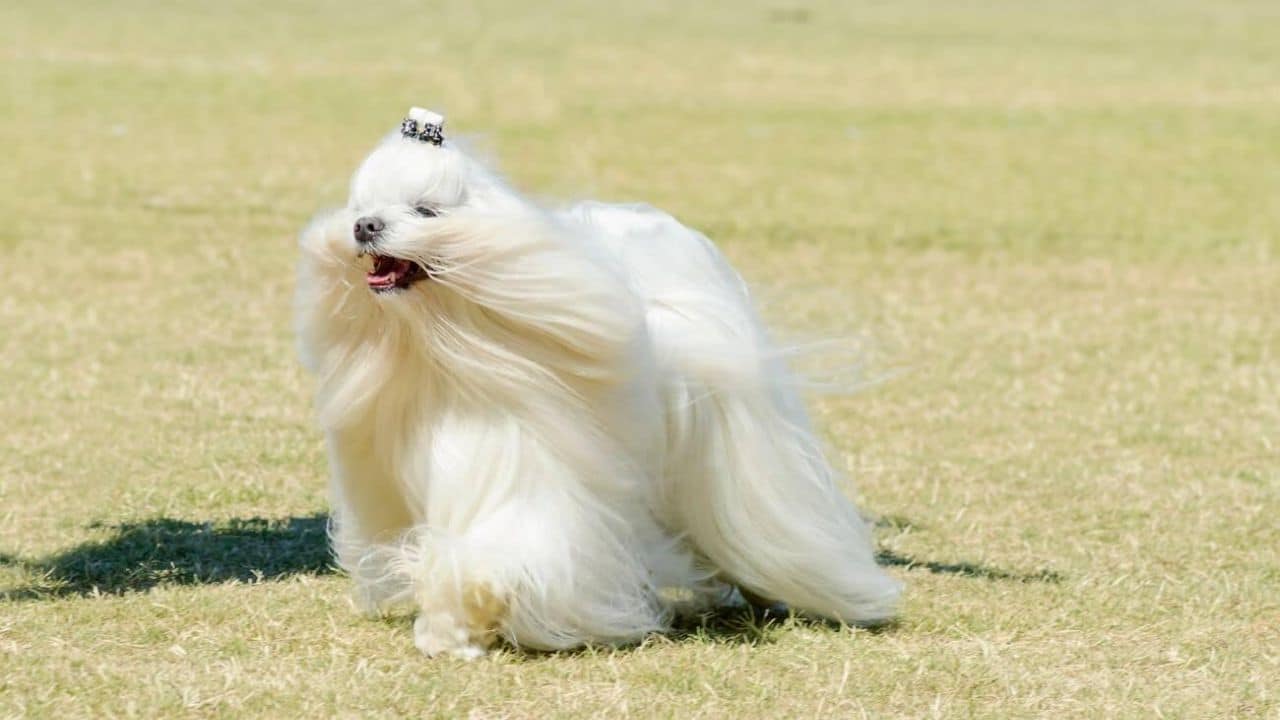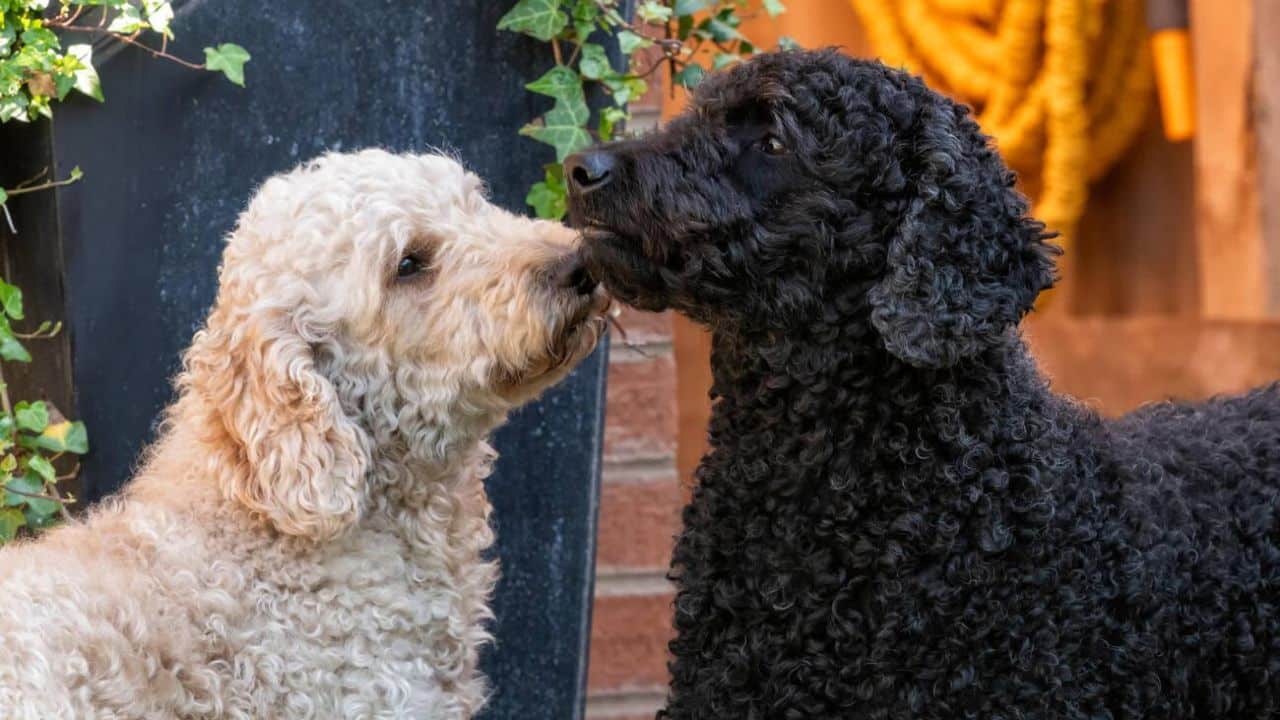Do you love animals but find yourself sneezing around certain furry friends? You may be allergic to pets, but that doesn’t mean you have to live without one. Many hypoallergenic pet options won’t irritate your allergies, allowing both you and your new companion to live happily together.
Pet allergies are no fun, triggering irritating symptoms like sneezing, coughing, respiratory congestion, eye irritation, and more in those sensitive to certain animals. An estimated 10–30% of people have allergies to common household critters like dogs, cats, hamsters, and birds. But just what makes pets cause allergic reactions?
The main culprits are proteins found in pet dander (microscopic flakes of skin), oil secretions, saliva, urine, and even fur or feathers. When inhaled, these substances spark the immune system to release histamine, which leads to typical allergy signs. However, some pets produce fewer of these allergy-inducing proteins than others.
You can reduce reaction risks by choosing less allergenic animal companions that were originally bred to be hypoallergenic or that simply shed very little. Crossbreeding two breeds can also result in a mix that’s sometimes more tolerable. Proper animal grooming and keeping them out of bedrooms further cut down on irritants around sensitive individuals.
Ready to find the perfect pet match? Here are 30 hypoallergenic picks of dogs, cats, small animals, reptiles, birds, fish, and insects that likely won’t make you sneeze.
Content Highlights
- No pet is hypoallergenic for all, but some dogs and cats are less likely to trigger reactions.
- Shedding level, coat type, size, and crossbreeding influence allergy risk.
- Other small animals, reptiles, birds, insects, and fish in contained spaces are other options.
- Consult an allergist first; introduce new pets slowly, monitoring symptoms.
- Thoughtful pet selection and cleanliness allow sensitive animal lovers to own pets!
Why Hypoallergenic Pets?
While no pet is 100% non-allergenic since people react differently, so-called “hypoallergenic” breeds are less likely to cause issues. Their coat type, size, or tendency to shed little means lower dander and protein production, thought to trigger allergic responses and symptoms like sneezing. Those with asthma or those not previously exposed may still react, however.
Thoughtful pet selection coupled with cleanliness measures reduces reaction risks, so allergic animal lovers can enjoy their furry, feathery, or scaly friends! Consult an allergist first and introduce pets slowly while monitoring symptoms over time when considering any animal.
30 Pets Less Likely to Make You Sneeze
Check our list of pets that less likely making you sneeze.
Hypoallergenic Dogs
Some dog breeds have a higher chance of agreeing with allergy sufferers since they shed less fur and dander or produce fewer allergy-causing proteins. Such “hypoallergenic dogs” include:
1. Afghan Hound
- A long, silky coat needs lots of grooming but doesn’t shed much.
- Aloof, dignified personalities best suit calm households.
2. Bedlington Terrier
- Soft, lamb-like fur doesn’t trigger substantial reactions.
- Spirited yet obedient natures require patient handling.
3. Bichon Frise
- Big attitude in a puffball body; minimal shedding keeps dander down
- Sweet and affectionate but demanding of attention
4. Chinese Crested
- A mostly hairless body eliminates dander concerns.
- Lively, playful lap dogs exist, but training challenges exist.
5. Greyhound
- A short, fine coat produces little dander and sheds minimally.
- Gentle couch potato happy to sprint then snuggle up quietly
6. Irish Water Spaniel
- Tight curly “Poodle-like” coat traps dander and sheds little
- An active sporting breed needs daily mental stimulation and exercise.
7. Kerry Blue Terrier
- Soft, dense, curly coat resembling furry sheepskin
- Strong work ethic makes training easy but needs puppy socialization.
8. Lagotto Romagnolo
- A thick, wooly coat requires grooming but sheds minimally.
- Smart and eager to please, but enough exercise prevents mischief.
9. Maltese
- Long, silky white hair doesn’t shed but requires daily brushing.
- A small “gentlewoman” dog suits calmly affectionate households.
10. Peruvian Inca Orchid
- Few exist, but their hairless or spotted coat eliminates reactions.
- Primitive, protective instincts demand experienced training.
11. Poodle
- Tight curly coats trap dander; frequent grooming cuts shed further
- Super smart, vivacious entertainers thrive with enough activity.
12. Portuguese Water Dog
- A low-shedding, waterproof coat suits those valuing minimal grooming.
- An alert worker with sensible initiative given proper leadership
13. Schnauzer
- The wire coat sheds little and produces fewer allergy triggers.
- Fun-loving family dogs, but boredom can lead to mischief.
14. Shih Tzu
- Long, silky locks hardly shed but require much brushing.
- Outgoing charmers who think they’re bigger than they are
15. Soft-coated Wheaten Terrier
- Fluffy, non-shedding coats need grooming 2-3 times weekly.
- Happy Sprite content playing inside or out all day
16. Xoloitzcuintli
- A bald or spotted, hairless coat completely prevents reactions.
- Loyal protectors value quality time with their people.
17. Yorkshire Terrier
- Fine, glossy steel-blue and tan fur sheds little with frequent brushing.
- Confident companion who knows she’s adorable and expects your affection!
So before you give up on finding your perfect canine buddy, explore these lower allergen possibilities that likely won’t make you sneeze!
Non-Shedding Cats

While no cat breed causes zero allergic reactions universally, the following often prove more tolerable thanks to producing fewer potential irritant proteins or shedding less fur carrying them:
18. Balinese
- Longhaired Siamese relative with a silky coat and sheds little
- Graceful, communicative attention seeker demanding your affection
19. Bengal
- Glittery short pelt with leopard spots needs weekly brushing.
- Athletic agility and dog-like trainability make it fun to teach tricks.
20. Burmese
- A short, glossy coat sheds less but demands weekly brushing.
- Charming conversationalists thrive on attention.
21. Colorpoint Shorthair
- Siamese relatives with a fine, velvety coat shed minimally.
- Vocal, affectionate, and social but selective with strangers
22. Cornish Rex
- Ultra-soft, wavy coats don’t trigger substantial reactions.
- Lively, highly adaptable charmers bond intensely with their people.
23. Devon Rex
- Downy fur falls out less and produces fewer irritant proteins.
- Quirky, lovable pixie personalities keep life interesting!
24. LaPerm
- The unusual curly coat sheds little but requires daily grooming.
- Lively, extremely social cats adapt quickly to new situations.
25. Oriental Shorthair
- A short, fine coat doesn’t mat or shed substantially.
- Intelligent, vocal Siamese alternative makes a chatty companion
26. Russian Blue
- Double coats need weekly grooming but don’t trigger most people.
- Reserved but affectionate and agreeable with polite strangers
27. Siberian
- The thick triple coat sheds moderately but causes few reactions.
- A patient, mellow temperament creates an exceptional family pet.
28. Sphynx
- Bald or sparsely coated means no shedding or reactions.
- A demanding, vivacious clown needs abundant quality attention!
So even with pet allergies, definitely consider these unique, lovable cat breeds less likely to make you sneeze.
Other Hypoallergenic Pets
Beyond traditional furry companions like dogs and cats, explore these more exotic pets that produce fewer irritants:
29. Small Animals
Rabbits, chinchillas, guinea pigs, gerbils, hamsters, mice, rats, degus, dormice, and sugar gliders often don’t spark symptoms since they live in enclosed cages, producing less environmental dander. Their fur also generally sheds less. However, hay, wood shavings, and proteins in their saliva or urine can still trigger some.
30. Reptiles, Birds, Fish, and Insects
Cold-blooded companions like lizards, turtles, snakes, frogs, tortoises, parrots, canaries, parakeets, and fish generate no pet dander and aren’t furry. Their scaled, feathered, or aquatic-coated bodies tend to provoke fewer immune responses. Insects like hissing cockroaches also don’t shed skin or fur, leading to airborne allergens. Their contained terrariums or aquariums further eliminate irritants in the environment.
So don’t give up home accents like aquariums or terrariums, or singing birds, thinking pets aren’t possible with allergies. More exotic species may better suit sensitive individuals.
20 Important Tips to Reduce Pet Allergies
Get ready to let the snuggles continue with these 20 important tips to effectively reduce pet allergies!
Choosing the Right Pet
Astute animal selection minimizes reaction risks from the start. Certain species and breeds tend to be more easily tolerated than others by people with allergies since they live in contained spaces or shed less dander and hair that can accumulate irritants.
1. Consider species besides cats and dogs: other small mammals, reptiles, birds, fish, and insects like rabbits, lizards, parakeets, goldfish, or even Madagascar hissing cockroaches won’t trigger symptoms as easily since they live in enclosed habitats rather than roaming homes.
2. Select specific non-shedding or hairless breeds: Certain dogs like Schnauzers or Poodles shed less, while hairless varieties like Chinese Crested or Sphynx cats lack fur altogether, eliminating dander concerns. Responsible breeders guide ideal matches.
3. Adopt mixed-breed rescue animals. Crossbreeding two breeds together or with mixed-breed parentage reduces the chances that offspring inherit specific troublesome proteins. Shelters offer plentiful, affectionate pets needing homes.
Thoughtfully selecting animal companions less likely to cause reactions from the start prevents struggling with disruptive symptoms later. Do allergy testing beforehand, confirming any new addition won’t spark sneezes down the road.
Preparing Home Environments
Since pet allergens lurk everywhere, from circulating dander to fabric remnants buried deep within stuffing, tackling environmental hideouts lessens exposure risks.
4. Vacuum regularly. Frequently vacuuming upholstery, drapes, floors and mattresses sucks up invasive allergens wandering surfaces and buried deep in fabrics. Change bags immediately so irritants don’t re-accumulate.
5. Remove carpets or install hard flooring. Carpeting traps dander, fur and other allergens impossible to fully eliminate despite vacuuming. Waterproof wood, tile or linoleum prevents infiltration while still delivering warmth and comfort underfoot.
6. Use HEPA air filters. High-efficiency particulate air (HEPA) filters capture nearly 100% of particles sized 0.3 microns floating airborne, including mold, pollen, dust mite debris and pet dander, through forced air systems.
7. Wash bedding regularly. Pillows and bedcovers collect skin flakes, hair and saliva particles shed overnight. Weekly hot water washing and drying denatures clinging allergens. Encase mattresses and pillows in impermeable covers for further protection.
8. Use microfiber dusting cloths. Statically charged microfiber materials electrostatically attract and cling to dust and dander instead of scattering particles when dusting. Disposable wipes simplify cleanup with ease.
9. Install smooth flooring. Hard surfaces like tile, wood or linoleum offer fewer places for fur, dander and urine to hide than carpet, clothes, curtains or cracked plaster. Frequent vacuuming and damp mopping easily tackle lingering allergens.
Simple home enhancements expel allergens from immediate environments while stopping additional accumulation. Maintaining diligent cleaning routines then keeps irritant levels continually low, promoting reaction relief.
Tackling Pet Care Essentials
Since animal dander, saliva, urine and other triggers take root on pets themselves before migrating throughout homes, comprehensive pet-targeted hygiene substantially lessens allergen burdens.
10. Bathe pets routinely. Regular gentle cleansing washes away clinging allergens from skin and fur, so they rinse down drains instead of transferring onto household surfaces. Most animals tolerate weekly bathing without skin drying.
11. Brush frequently. Fur harbors dander, skin oils and pollen that brushing evenly distributes before removal during weekly bathing. Rubber grooming gloves also tackle stubborn, lingering hair between full baths.
12. Trim nail length: Lengthened nails trap significantly more pollen, feces, urine residue and debris underneath while also retaining additional shedding fur. Keeping nails short and smooth prevents dragging irritants indoors.
13. Change litter pans quickly. Soiled cat litter emits proteins, triggering allergic asthma, especially when allowed to accumulate. Swapping out urine-soaked litter for fresh substrate at least twice a week limits volatile emissions.
14. Wash pet bedding routinely. Just like human bedcovers, pet blankets and plush beds capture shed skin cells, hair and dander that recur when reused without washing. Weekly hot water launderings reduce embedded allergens.
15. Feed allergen-minimizing diets: Some pets intrinsically produce fewer allergy-triggering proteins. Veterinarian-prescribed and commercially available limited-antigen feeds additively support natural dander and protein reductions from within through digestive restriction.
Assiduous pet cleanliness impedes allergen spread from originating animal sources outward into home environments. Establishing robust hygiene routines lessens contaminants at their roots.
Making Lifestyle Adjustments
Since close animal interactions escalate allergen exposures, enacting common-sense lifestyle changes neatly sidesteps unnecessary risks from cuddling, grooming or playing directly.
16. Restrict access to bedrooms and bedding. Isolating pets away from bedrooms fully eliminates nighttime exposure dangers when defenses slumber. Eight hours without contact alleviates allergy burdens substantially while still allowing daytime togetherness.
17. Bathe after contact: Always washing hands immediately after petting prevents transferring dander or saliva from fingertips to eyes, nose or mouth and from leaving traces across household items. Showering post-play removes lingering irritants from the skin and hair too.
18. Don household “pet”shirts”—designate specific machine washable shirts for engaging pets while lounging around homes to prevent dander remnants from clinging to personal clothing worn publicly. This clothing barrier localizes allergens.
Small, reasonable lifestyle adjustments sustain treasured positive pet interactions while mitigating inevitable allergen exposures. Staying mindful of contact remnants bolsters coping capacities.
Adopting Personal Health Habits
Equipping the body and mind with added nutritional and medical support builds extra defenses, preventing innocent environmental allergens from cascading into troublesome immune overreactions.
19. Take targeted nutritional supplements. Allergy-specific supplements like quercetin, butterbur or vitamin C prepare respiratory, skin and digestive tract tissues, creating resilience against inflammatory histamine reactions once allergens penetrate while also moderating underlying hypersensitivity.
20. Explore OTC/prescription symptom relievers. Over-the-counter antihistamines like Claritin (loratadine), Zyrtec (cetirizine) or Benadryl (diphenhydramine) block histamine release, stopping sneezing, runny noses or itchy eyes before they start. Nasal sprays, inhalers, eyedrops and other medications treat acute attacks or provide long-term prevention assistance too. Don’t suffer needlessly!
Bolstering personal health equips mind and body coping when allergen exposures remain unavoidably high despite best efforts. Customized remedies treat the root causes of allergies rather than merely managing disruptive symptoms.
Takeaway
Pet allergies can create real barriers to enjoying an animal’s companionship. But careful selection of minimally allergenic breeds and species better tolerable by sensitive people opens up enjoyable pet ownership. Responsible consideration of both your health needs and an animal’s care needs allows you to select a companion you can live happily with.
So don’t let allergies or asthma prevent you from choosing pets wisely that are less likely to make you sneeze! Thoughtful choices bring joy, comfort, entertainment, and unconditional affection from the animal friend who fits your lifestyle and health best.
Frequently Asked Questions (FAQs)
Still have queries? Check all our answers to some commonly asked questions about Hypoallergenic Pets and Allergies.
Are there any 100% hypoallergenic pets?
No pets are completely non-allergenic since reaction risks depend greatly on the individual. Proteins in dander, oil secretions, urine, saliva, fur, or feathers can all spark allergy symptoms like sneezing when inhaled. However, reduced-shedding dogs, hairless animals, ones isolated in cages or tanks, and animals with consistent grooming or bathing emit fewer potential allergens into living spaces.
What pet is least likely to cause allergies?
Shedding level and coat type influence allergy risk substantially. Less allergenic pets include fish, reptiles, birds, amphibians, insects, hairless cats and dogs, minimized shedding breeds like Poodles, Schnauzers, or Portuguese Water Dogs, and pets confined to tanks and cages. Their environments contain irritants better. However, proteins in their waste, food, bedding, or feathers can still cause issues for sensitive individuals.
What are the best hypoallergenic house pets?
Ideal house pets for allergy sufferers include fish, hermit crabs, sea monkeys, lizards, snakes, turtles, tortoises, parrots, parakeets, canaries, cockatiels, chickens, Russian hamsters, gerbils, degus, silkie chickens, non-shedding rabbit breeds like Rex or Mini Lop, and hairless dogs and cats like Xoloitzcuintli, Chinese Crested, or Sphynx since they roam homes versus live confined to cages or tanks. Pay attention to your unique reaction symptoms when selecting any pet.
Can you develop allergies to pets over time?
Yes, you can develop new pet allergies later in life, even after years of tolerating certain animals just fine, especially through increased exposure. Allergies also often worsen with age. Kids with allergies may outgrow them but later redevelop worse reactions. Whether just developing sensitivity or past tolerance fading, worsening respiratory symptoms, eye irritation, and skin issues point to new or increasing allergic responses over time from pet dander or proteins. Consider allergy testing to identify specific new triggers.






































